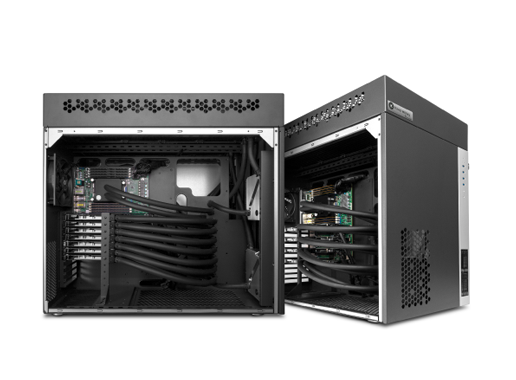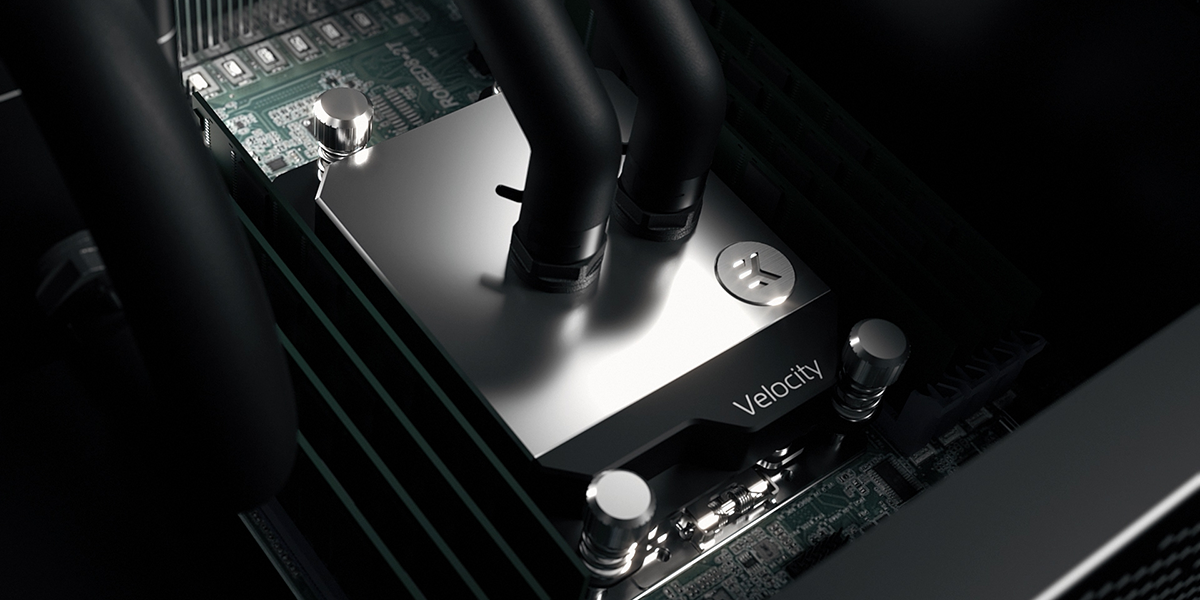
WHY LIQUID COOLING?
8/20/2021 4:18 PM
The current state of cooling in the workstation market
The default, and usually only, factory provided option for many professional grade PC components is air-cooling. That is the cheapest and easiest form of cooling for any piece of hardware, as it requires relatively little engineering and it uses readily available materials and components like aluminum fin-stacks, copper heat pipes, and fan heatsinks.

However, more modern and powerful hardware feature a higher density of components and silicone dies as well as high power draws, that all translate into greater cooling demands in order to stay within safe operating temperatures. With such high demands, air-cooling is reaching its practical limit and engineers have no other options than to use high-speed fans and to let the components run at higher temperatures thus limiting performance and shortening the lifespan to an extent.
This is the point where liquid cooling enters the scene.
Basics of liquid cooling
Air has a heat capacity 4.16 times lower specifically compared to water-based coolants and, as such, can carry a smaller amount of heat energy per unit of volume. In addition, water-based coolants have a much higher thermal conductivity and density compared to air, allowing them to absorb heat energy quickly and efficiently from components using specifically designed water blocks.
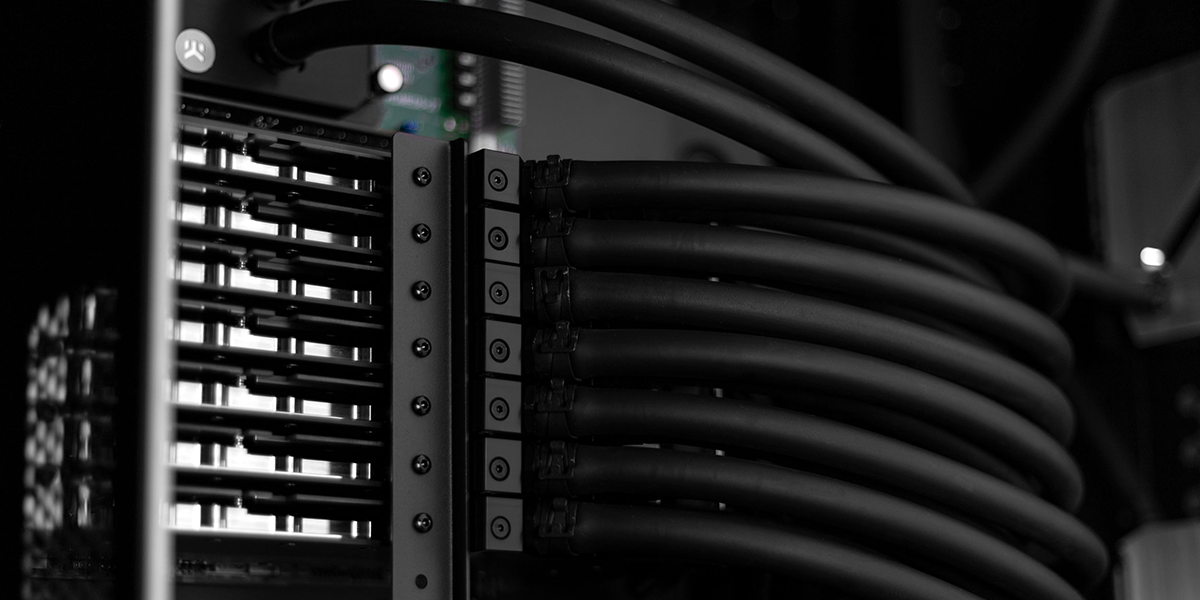
Relying on these base principles, properly engineered liquid cooling loops can provide much higher and more efficient cooling for computer components
Direct benefits of liquid cooling
Most modern CPUs and GPUs utilize complex boost algorithms to allow them to scale their core and memory clock speeds in accordance with the level of workload, power limits, and temperatures. It is a delicate dance of providing maximum performance while staying within acceptable operational parameters.
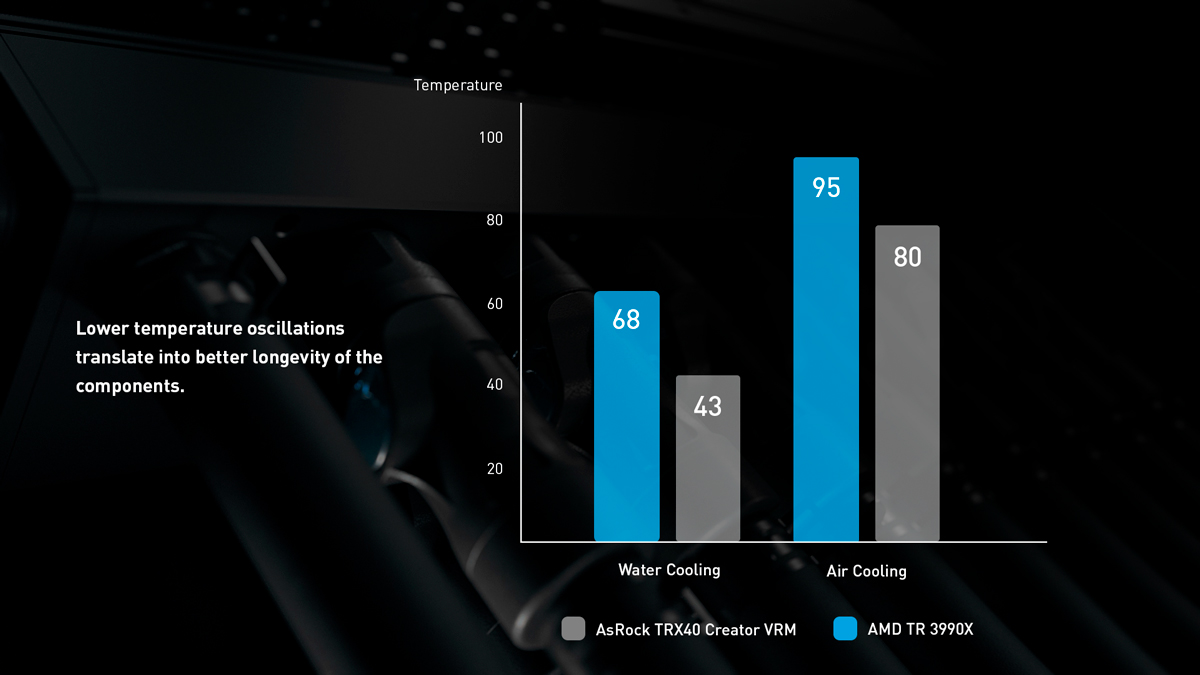
Operating within those limits for extended periods of time (as required by machine learning and 3D rendering projects) has become problematic for air cooling recently as the most powerful components have approached power draws of 260W to 300W per component. Cooling such high heat loads has indicated a need for implementation of liquid cooling as it provides significantly lower operating temperatures and allows higher density of components per workstation.
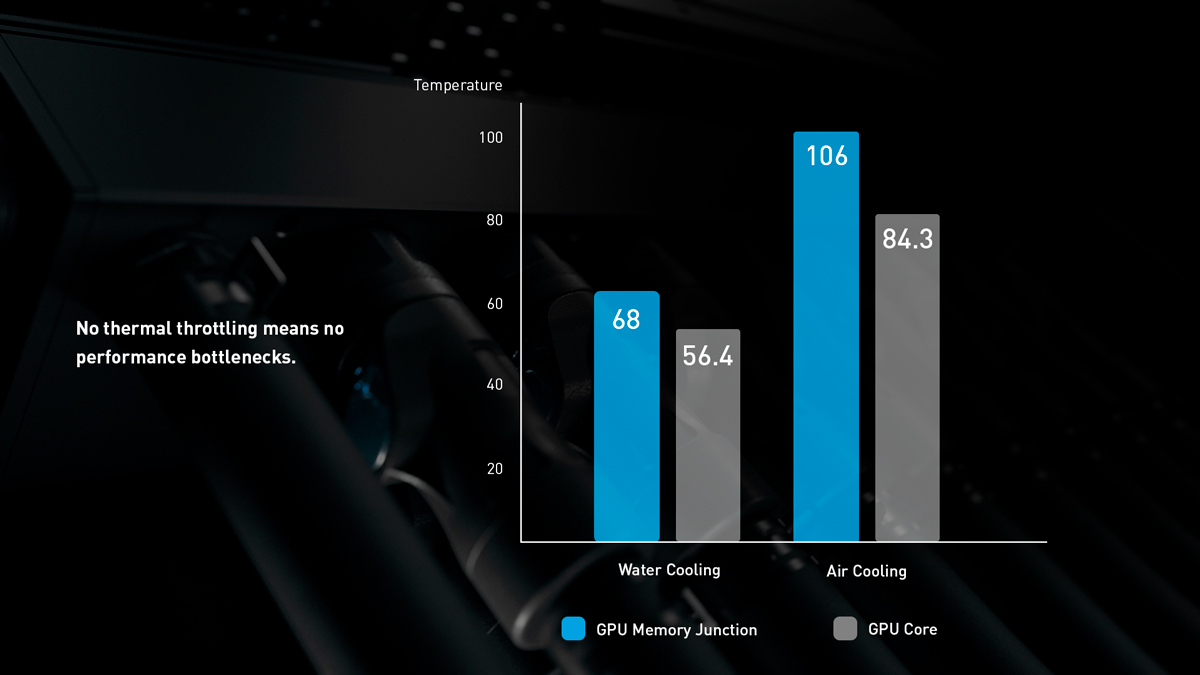
Lower temperatures allow CPUs and GPUs to maintain higher boost clocks, thus directly increasing performance in some workloads by as much as 6%! In addition, thanks to cooler running chips, the power consumption is decreased by a few percentage points.
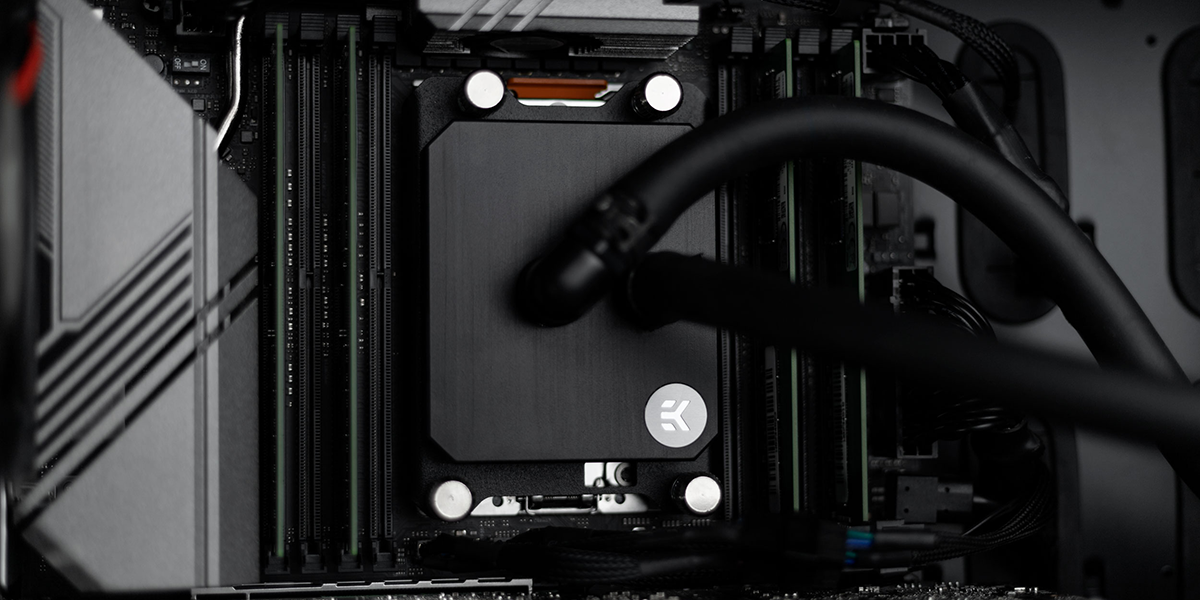
Adequately designed water blocks also provide improved cooling to the now hotter running GDDR6X VRAM chips and VRM components. In doing so, they increase their long-term performance and life span.
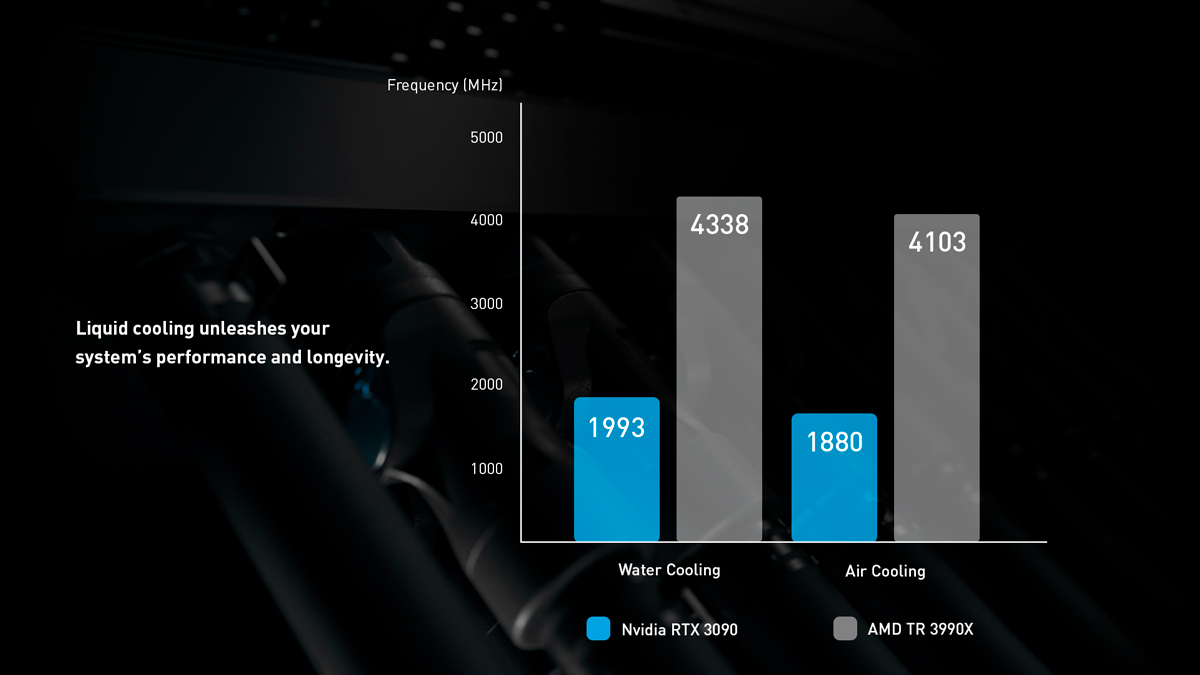
Utilizing a water-based coolant allows heat energy to be moved and dissipated using radiators that are more efficient than standard heat sinks. Bigger radiators allow usage of larger and quiet running fans that reduce the overall noise produced by the workstation.
Reliability and safety
For many years, reliability, the fear of leakage, and complexity have been major concerns of professionals who want to utilize the advantages of liquid cooling. EK Fluid Works workstations have been designed to eliminate these concerns, full stop.
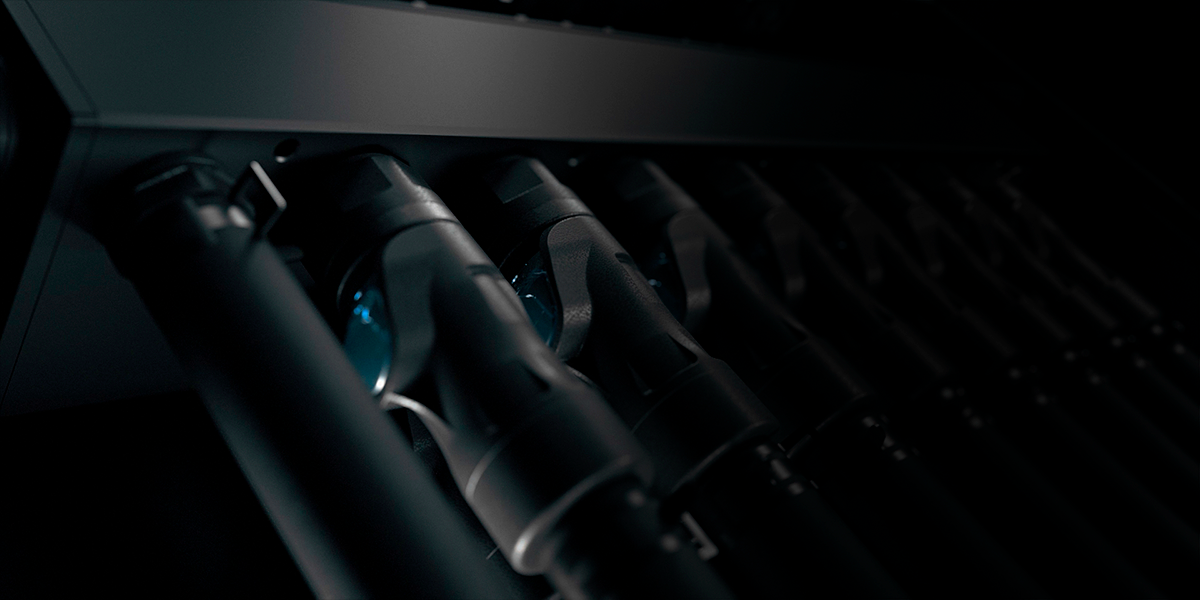
- Redundant* high-quality pumps ensure that if one pump fails, there will always be one to circulate the coolant and prevent overheating
- High-quality gaskets, O-rings, and durable tubing effectively eliminate the possibility of leaks occurring as well as minimize the evaporation of coolant during extended periods of operation under heavy load.
- Industrial-grade Quick Disconnect Couplings (QDC) allow for hassle-free expandability and maintenance without any concern of drips or spillage.
- Due to slower running fans and more efficient dust filters, dust ingress is slowed and service downtime for cleaning is reduced.
*Not applicable to the Fluid Works Studio Series S3000
Conclusion
Modern liquid cooling in the workstation market offers many benefits with little to no drawbacks. It allows maximizing the performance extracted from expensive components, reduces noise, increases component longevity, and improves overall reliability.







